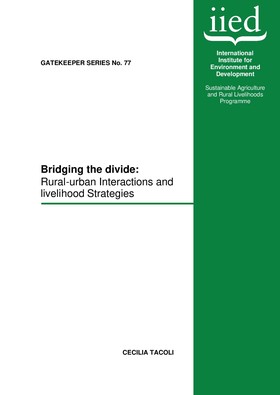Bridging the Divide: Rural-Urban interactions and livelihood strategies

Most development theory and practice is implicitly based on the dichotomy between 'rural' and 'urban' areas, populations and activities. This is reflected in the division of policies along spatial and sectoral lines, with urban planners usually concentrating on urban nodes and giving scant attention to agricultural or rural-led development, while rural development planners tend to ignore urban centres and define rural areas as consisting only of villages and their agricultural land.
This, however, does not reflect the reality of households' livelihoods, which often include both rural and urban elements. For example, many urban enterprises rely on demand from rural consumers, and access to urban markets and services is crucial for most agricultural producers. In both rural and urban areas, a significant proportion of households relies on income diversification and on the combination of agricultural and non-agricultural income sources.
Cite this publication
Available at https://www.iied.org/6144iied